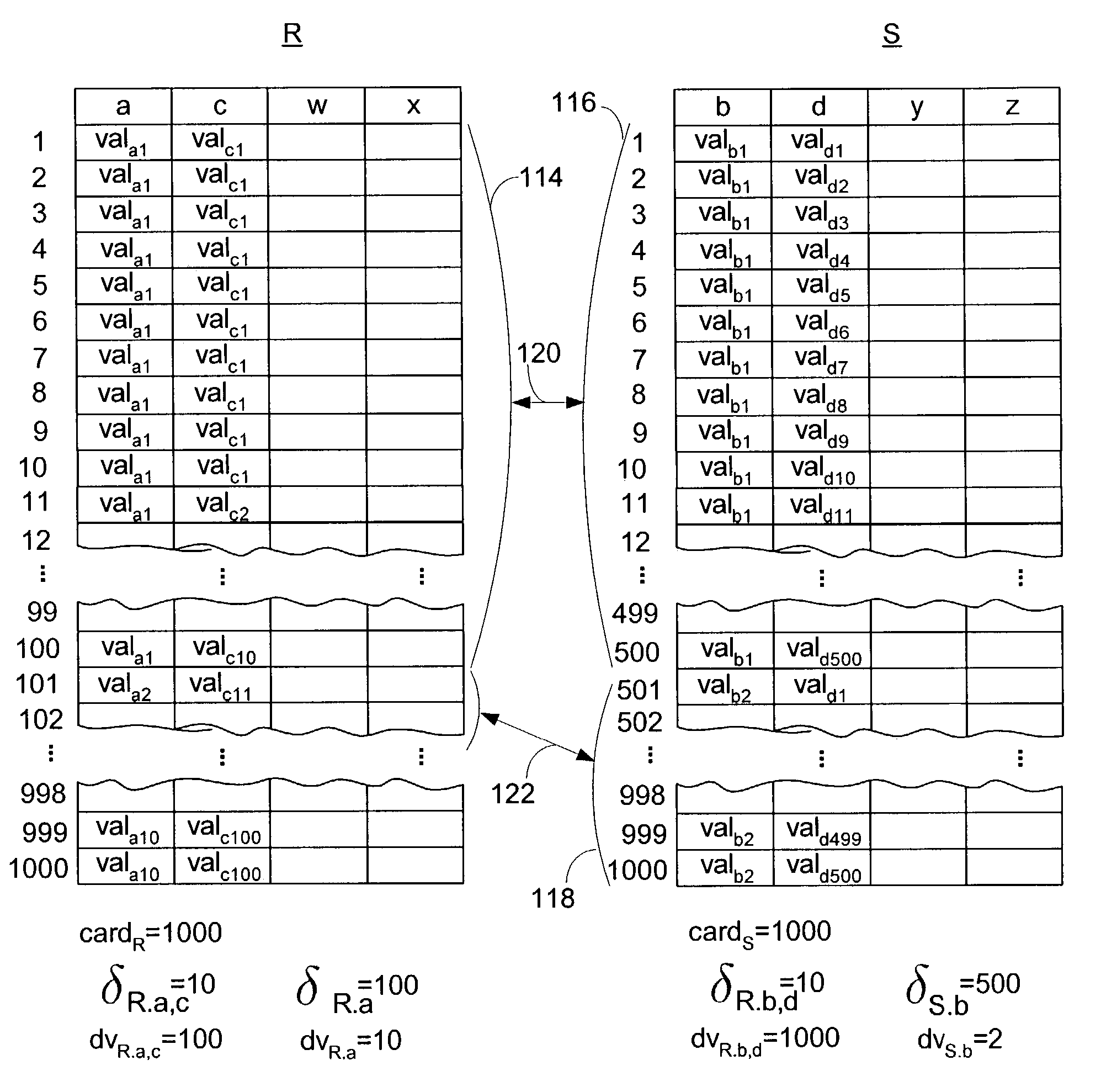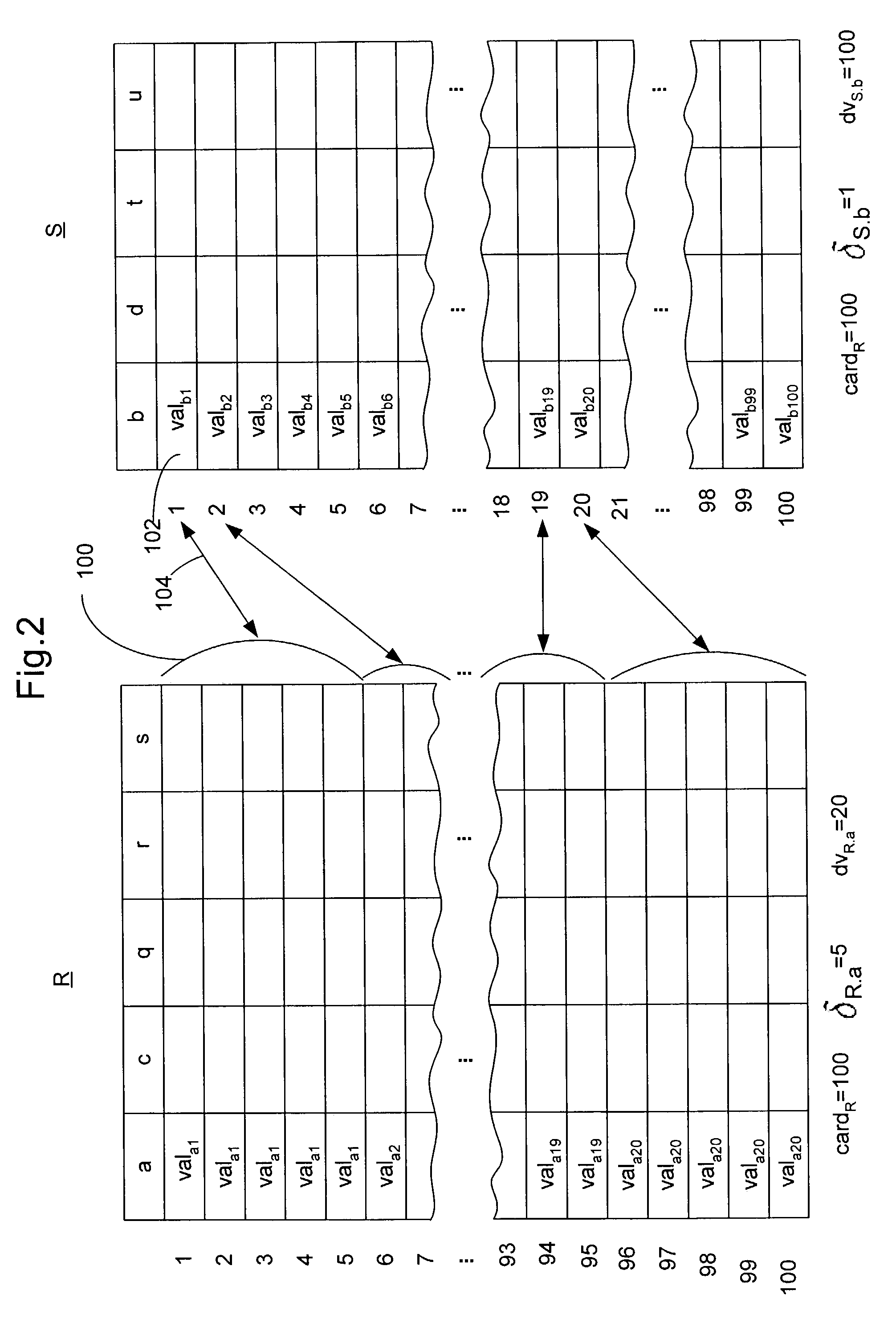Cardinality estimation of joins
a technology of cardinality and joins, applied in the field of method of estimating cardinality of joins, can solve the problems of large relation, high cost of bad execution plan, and high cost of joining operation
- Summary
- Abstract
- Description
- Claims
- Application Information
AI Technical Summary
Benefits of technology
Problems solved by technology
Method used
Image
Examples
example
[0071]SELECT*FROM part, supplier, lineitem
[0072]WHERE[0073]p_partkey=l_partkey AND[0074]s_suppkey=l_suppkey AND[0075]p_name like ‘% green’
[0076]OPTION (force order)
In the example, the database TPC-H is used. The following values are obtained from the TPC-H database where S=supplier, P=part, and L=lineitem.
[0077]cardS=1000, δS.suppkey=1
[0078]cardP=20000, δP.partkey=1
[0079]cardL=600000, δL.partkey,suppkey=7.5, δL.partkey=30, δL.suppkey=600
The filter σpname like ‘green’ returns the following information where σgreenP is denoted σP:
[0080]cardσP=200, δσP.partkey=1
After applying the Cartesian product, it can be estimated (denoting “S×σP” as x) that
[0081]cardx=1000*200=200000
[0082]δx.partkey,suppkey=1 (it is the product of the original densities).
[0083]δx.partkey=1000 (since each distinct partkey value was combined with all 1000 suppliers).
[0084]δx.suppkey=200 (since each distinct suppkey value was combined with all 200 green parts).
[0085]All the information in the above example can be der...
PUM
 Login to View More
Login to View More Abstract
Description
Claims
Application Information
 Login to View More
Login to View More - R&D
- Intellectual Property
- Life Sciences
- Materials
- Tech Scout
- Unparalleled Data Quality
- Higher Quality Content
- 60% Fewer Hallucinations
Browse by: Latest US Patents, China's latest patents, Technical Efficacy Thesaurus, Application Domain, Technology Topic, Popular Technical Reports.
© 2025 PatSnap. All rights reserved.Legal|Privacy policy|Modern Slavery Act Transparency Statement|Sitemap|About US| Contact US: help@patsnap.com



